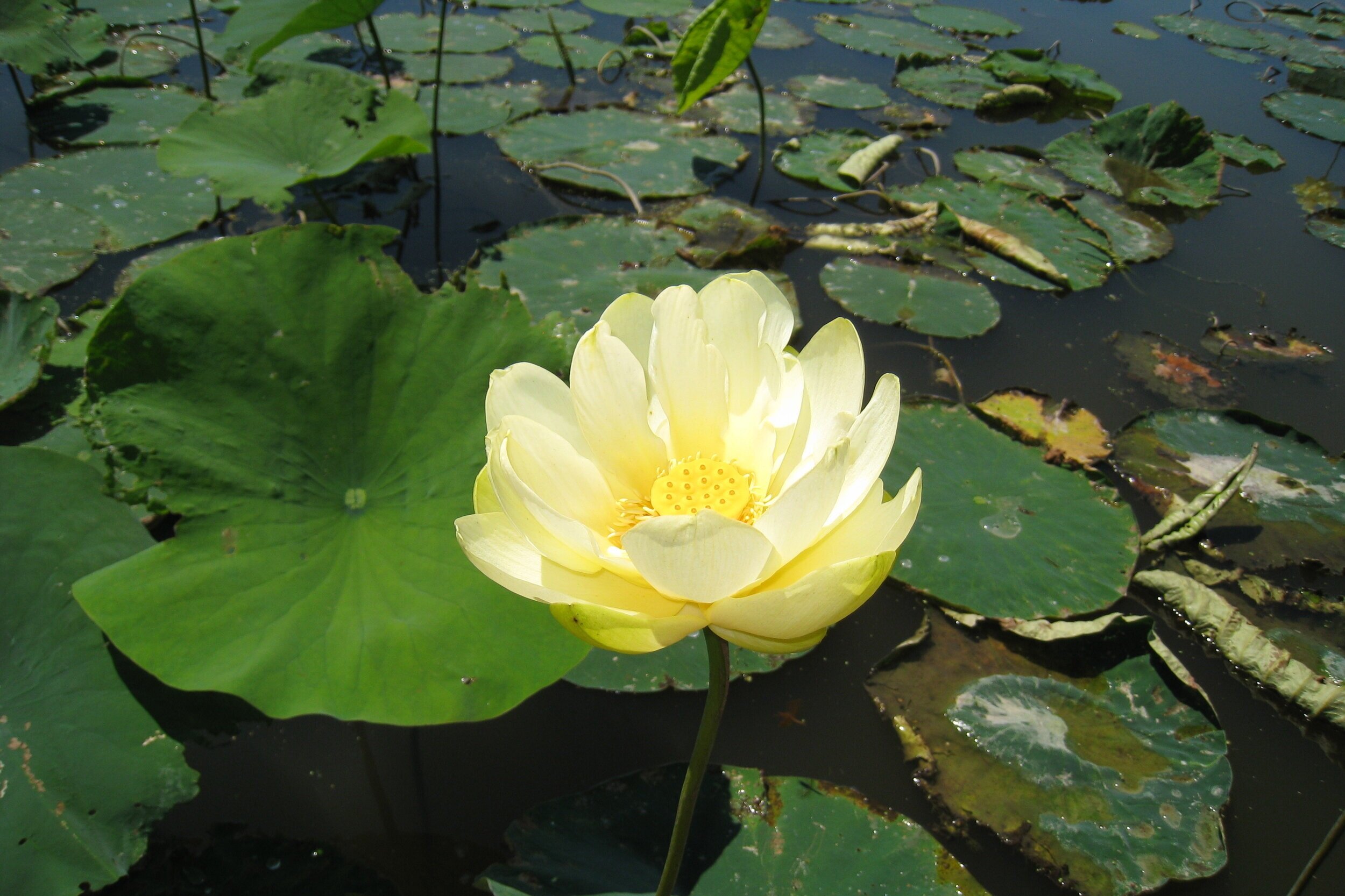Wildflowers in the Mississippi River Park
By Jessica Nelson, Park Ranger, Mississippi National River and Recreation Area
In the spring and summer, no matter where you might be along the river, you can find a pop of color from a variety of blooming wildflowers. From the bluff prairies to the floodplain forest, you are sure to find wildflowers if only you take a moment to look closely.
When walking through the park in the spring, as you wind through the trails underneath budding silver maples and cottonwoods, look down to see the vibrant white of bloodroot blooming. This common flower in the park gets its name from red liquid that seeps from its roots when broken. Another flower you’re likely to find on your travels in the woodland is wild columbine. This bright red flower stands tall and the blooms appear to be upside down. This bloom is a favorite of hummingbirds returning to Minnesota in the spring and bees as they become more active.
When walking in the prairies of the park in the spring, you will notice that yellowed grasses dominate the landscape, but an attentive observer can find many early blooming prairie plants among last year's growth. Many early bloomers are shorter plants as they don’t need to compete with taller grasses for light at this time of the year. You’re sure to spot the bright yellow of hoary puccoon, the electric purple of spiderwort, and the can’t-be-missed, tubular pink blooms of large-flowered beardtongue as you search through the grasses for these gems.
A walk in the park during the summer brings an entirely new cast of flowers to the stage. Head to a savanna, prairie or wetland in the park to find an abundance of species. As you walk again in the prairie, sweet smelling wild bergamot can often be found along the trail. Make sure to stop and breathe in its minty fragrance! As you stop to smell the bergamot, you may spot several monarch butterflies dancing amongst the orange and pink flowers of butterfly weed and common milkweed. You will also notice the golden petals of black-eyed susans and gray-headed coneflowers lighting up the prairie as you explore. When you find yourself in a wetter area of the park, near a pond or on the river, take time to look for the prominent blue bloom of blue flag iris, typically blooming just on the shoreline of ponds and lakes. Look out to the calmer sections of water on the river and you will surely spot the white flowered stalks of American lotus and white waterlilies floating.
The park truly puts on a great show of wildflowers in the spring and summer! Remember when searching for wildflowers always follow local guidelines and never pick wildflowers. Bring a field guide to help you identify species. A few other helpful tips- you will often find the most variety of flowers in sunny areas, go searching after a rain storm to see what new species have responded to the rain and bloomed, and follow the insects- where there are insects, there will be flowers! Happy exploring!
Common Spring Blooms
Prairie: Blue-eyed Grass, Hoary Puccoon, Prairie Violet, Field Pussytoes, Golden Alexander, Large-flowered Beardtongue, Spiderwort, Prairie Smoke, Wild Strawberry, Prairie Phlox, Pasque Flower, Wild Lupine
Woodland: Jack-in-the-Pulpit, Wild Ginger, Columbine, Wild Blue Phlox, False Solomon’s Seal, Bloodroot, Wild Geranium, Wood Sorrel
Wetland: Skunk Cabbage, Marsh Marigold
Common Summer Blooms
Prairie: Butterfly Weed, White Wild Indigo, Yarrow, Compass Plant, Prairie Sunflower, Wild Bergamot, Common Milkweed, Black-eyed Susan, Coneflowers, Lead Plant, Purple Pairie Clover, White Prairie Clover, Rough Blazing Star, Hyssop, Prairie Onion, New Jersey Tea, Wild Rose, Hoary Vervain, Round-Headed Bush Clover
Woodland: Harebell, Michigan Lily, Canada Anemone, Woodbine, Woodland Sunflower
Wetland: Blue Flag Iris, Great Blue Lobelia, Broad-leafed Arrowhead, Swamp Milkweed, Joe-pye Weed, Smartweed, American Lotus, White Waterlily, Blue Vervain








